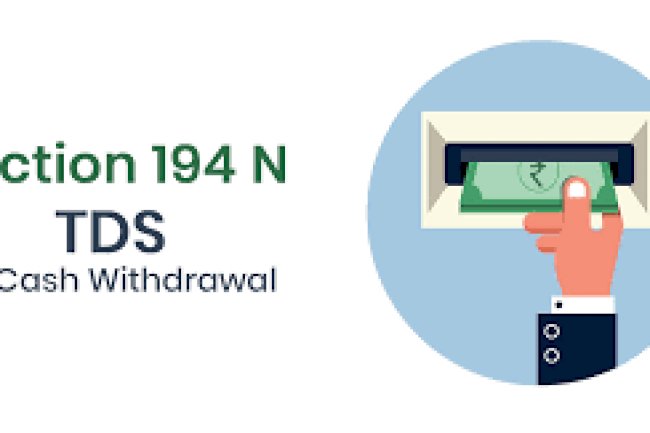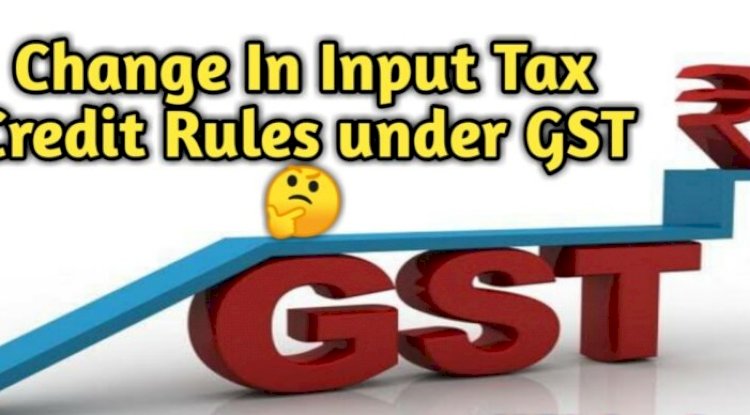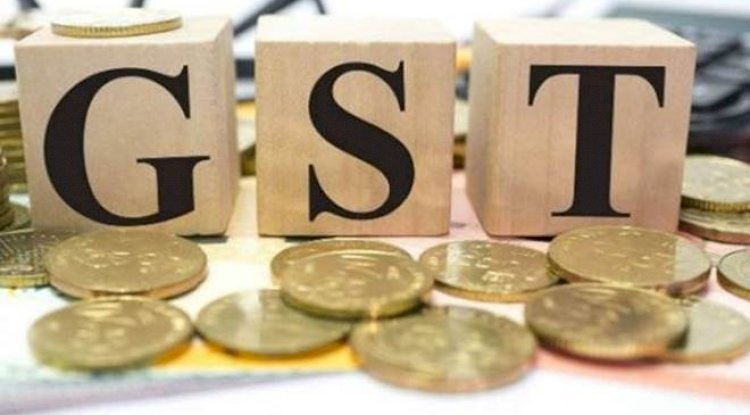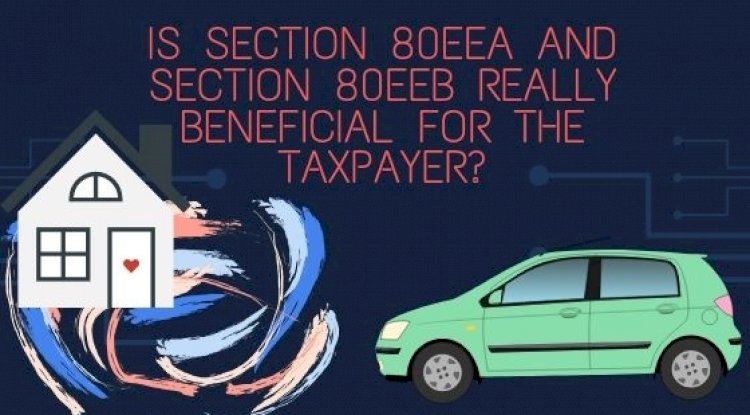Impact of ‘Budget 2020 Finance Bill’ on Tax Audit of Assessment Year 2020-21
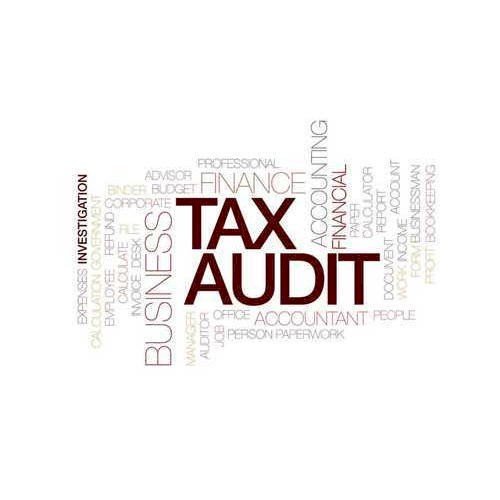
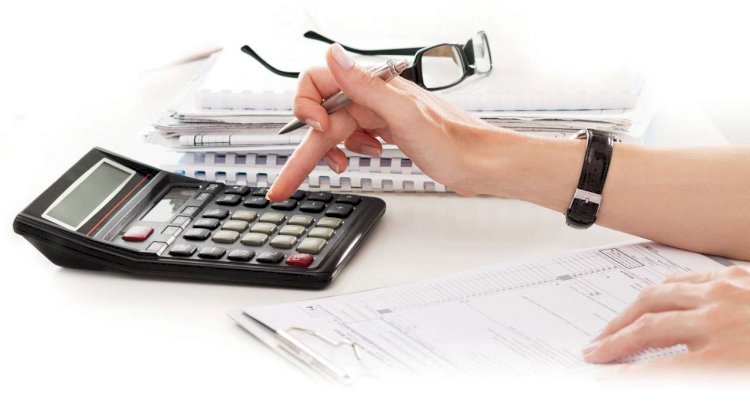
Tax Audit
The dictionary meaning of the term "audit" is check, review, inspection, etc.
There are various types of audits prescribed under different laws like company law requires a company audit, cost accounting law requires a cost audit, etc.
The Income-tax Law requires the taxpayer to get the audit of the accounts of his business/profession from the view point of Income-tax Law.
Section 44AB gives the provisions relating to the class of taxpayers who are required to get their accounts audited from a chartered accountant.
The audit under section 44AB aims to ascertain the compliance of various provisions of the Income-tax Law and the fulfillment of other requirements of the Income-tax Law.
The audit conducted by the chartered accountant of the accounts of the taxpayer in pursuance of the requirement of section 44AB is called tax audit.
The chartered accountant conducting the tax audit is required to give his findings, observation, etc., in the form of audit report. The report of tax audit is to be given by the chartered accountant in Form Nos. 3CA/3CB and 3CD.
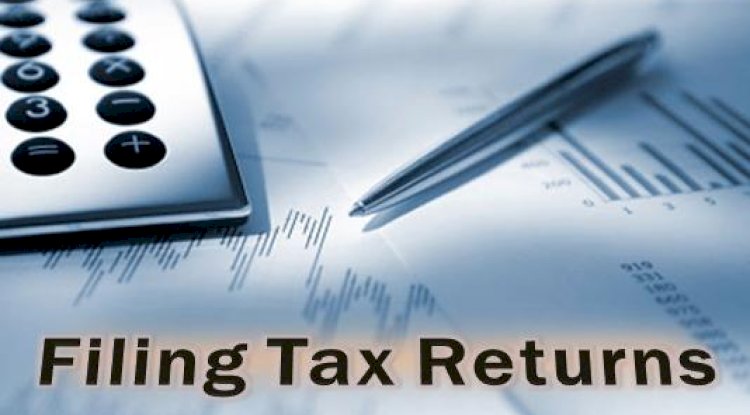
The finance Bill, 2020 has brought a major amendment to section 44AB of Income Tax Act, 1961. Moreover, the proposed amendment is set to make all very confused.
In Budget 2020, Govt introduces one more slab of turnover of INR 5 Cr for the person, whose CASH RECEIPTS & CASH PAYMENTS does not exceeds 5% of such payments, and straightway exempted such category from Tax Audit.
This is to remind you that 44AB limit is still 1 crore (except above specified), and 44AD has limit of Rs. 2 crores.
First look at the amended section – now position of 44AB is as under from AY 2020-21
EXTRACT OF Section 44AB. – Audit of accounts of certain persons carrying on business or profession.
Every person,—
(a) carrying on business shall, if his total sales, turnover or gross receipts, as the case may be, in business exceed or exceeds one crore rupees in any previous year;
from AY 20-21 ,
Govt. inserted a proviso in the said clause so as to provide that in the case of a person whose aggregate of all amount received including amount received for sales, turnover or gross receipts during the previous years, in cash, does not exceed five per cent. Of the said amount; and the aggregate of all payments made including amount incurred for expenditure, in cash, during the previous year does not exceed five per cent.
Of the said payment, this clause shall have effect as if for the words “one crore rupees”, the words “five crore rupees” had been substituted. …Applicable from AY 20-21.
(b) Carrying on profession shall, if his gross receipts in profession exceed fifty lakh rupees in any previous year;
Due to the proposed change in budget 2020 the situation stands as follows,
- For assesse having TO> 2 crores (but below 5 crores and having Cash receipts and cash payments not exceeding 5%), he is not liable to Tax Audit.
This holds good irrespective of the assessee showing profits up to 6% or 8% as per 44AD or not.
- For assesse having TO< 2 crores (but having Cash receipts and cash payments not exceeding 5%), he is Liable to Tax Audit, if he does not show profits up to 6% or 8% as per 44AD.
Applicability of Tax Audit discussed above is only with respect to an assessee carrying on Business. Such analysis made above do not apply to a person engaged in Profession.
Well, For assessee having 2 cr to 5 cr, In their case,
Sec. 44AD will not be applicable. So no requirement of 8% or 6% Net profit to maintain. And
If cash receipts & Cash payments are below 5% , Then there is So NO TAX AUDIT. Fair enough. BUT Logic changes for assesse having less than 2 crore turnover. Those assesee need to maintain 8% / 6% NP or They have to go for TAX AUDIT.
Objective of tax audit
One of the objectives of tax audit is to ascertain/derive/report the requirements of Form Nos. 3CA/3CB and 3CD. Apart from reporting requirements of Form Nos. 3CA/3CB and 3CD,
a proper audit for tax purposes would ensure that the books of account and other records are properly maintained, that they truly reflect the income of the taxpayer and claims for deduction are correctly made by him.
Such audit would also help in checking fraudulent practices. It can also facilitate the administration of tax laws by a proper presentation of accounts before the tax authorities and considerably save the time of Assessing Officers in carrying out routine verifications, like checking correctness of totals and verifying whether purchases and sales are properly vouched for or not.
The time of the Assessing Officers saved could be utilised for attending to more important and investigational aspects of a case.
EXPLAIN 3CA AND 3CB AND 3CD FORM IN TAX AUDIT
Form 3CA, 3CB and 3CD are basically prescribed forms that auditors use to present tax audit reports. For audit reports, the form prescribed is Form 3CB and the stipulated particulars are to be reported in Form 3CD.
Form 3CA
One of the significant forms utilized in the procedure of filing Income Tax returns in India is the Form 3CA. It is an Audit Report indenture.
An Audit Report is a statement that is controlled and managed in accordance with Section 44AB of the Income Tax Act, 1961. Specific rules for utilising this form is prescribed in the Income Tax Act of 1961 under Rule 6G (1) (a).
At the time of filing income tax returns, the assessee must use a catalogue of forms that has been executed by the Income Tax Department of India. A detailed list regarding the regulations and rules pertaining to the usage of these forms has been concocted by the Income Tax rules of 1962 and the Income Tax Act of 1961.
After the occupation and vocation of the assessee goes past an audit that is done by a lawfully recognized chartered account who is holding full time Certificate of Practice, only then is it submitted.
- For a person paying taxes and taking on a business or profession and who is in the process of getting his accounts audited as per any other law than the income tax law.
.Form 3CB
In compliance with the rules set by the Income Tax Department of India, Form 3CB is a stipulated composition of an audit report. In relevance to the procedure of filing income tax returns, form 3CB needs to be deployed only for particular assessees on the basis of specific provisions and regulations.
In accordance with the governance of Section 44AB of the Income Tax Act and Clause (b) of the sub rule (1) under Rule 6G, form 3CB is an audit report. Form 3CB is specifically controlled and managed by provisions prescribed in rule 6G (1) (b).
The procedure of filing Income Tax returns in India is ruled by the Income Tax Act of 1961 as well as the Income Tax Rules of 1962.
This form is needed to be yielded on the part of a person who controls the business or profession and does not have to be involved into the accounts of the organisation audited according to any law other than the Income Tax Act, 1961.
- For a person paying taxes who has a business or a profession and is not required to get his or her accounts revised as per any other law.
Form 3CD
Form 3CD stands as a format of Audit Reports in India.
Tax auditors of only a particular section of assessees can file this audit report. The rules and regulations for the utilization of this form is promulgated with clarity by the Income Tax Department of India. In keeping with Section 44AB of the Income Tax Act of 1961 as well as Rules 6G (2),
Form 3CD has been fabricated. To the Audit Report, form 3CD functions as an Annexure. It includes 32 Clauses and is an integral aspect of filing Income Tax returns in India.
Form 3CD needs to be prepared by the management of the said business. The Tax Auditor examines the form and then submits it to the Tax Auditing Authority. Following this, the information provided in Form 3CD is then validated and confirmed by the Tax Auditing Authority.
- This form is a statement of particulars and is a part of the Audit Report. All information regarding the business and all its transactions are required to be mentioned and filled accurately wherever asked.
Particulars of forms 3CA, 3CB, 3CD
Form 3CA
- Details like name, address and Permanent Account Number of the taxpayer.
- Beginning and end date of profit and loss account as well as income and expenses account.
- Auditor’s name
- Laws applicable on the basis of which the auditing took place.
- Audit report date
- Details of balance sheet
- Pronouncement of adjunction Form 3CD with the audit report
- Qualifications and audit observations noted with respect to Form 3CD
- Membership Number as well as name and address of the auditor
- Venue and date of signing the audit report
- Auditor’s stamp or seal
Form 3CB
- Information regarding taxpayer’s name, address and PAN
- Start to end date accounts of profit and loss as well as income and expenditure
- Balance sheet date
- Location name of where the book accounts are generally kept
- Name and location of branches
- 3 (a): Observations of the audit, qualifications, other remarks or disparity
- 3 (b): Auditor’s statements on the information and reasons for the significant audit, surety that the enterprise along with its branches conserve efficient account books, authentic balance sheet and profit & loss account
- A statement declaring the accoutrement of Form 3CD with the audit report
- Any dissimilarities and audit observations obtained pertaining to Form 3CD
- Location and date while signing the audit report
- Membership number, name and address of the auditor
- Stamp or seal of the auditor
Form 3CD
- Name, address and PAN of the taxpayer
- If the taxpayer is responsible for paying service tax, sales tax, customs duty and other such excise duty, then the registration number must be provided
- Dates of the previous and current assessment year
- Specify the applicable clause of Section 44AB in regards to which the audit has been done
- This form has a 41-points statement of particulars. Each and every specific detail with respect to the different parts of the business and its transactions are required to be mentioned, wherever asked
Clause-wise summary of Form 3CD
|
Sl. No. |
Particulars |
Comments |
|
|
1 |
Name of the assessee |
These are the basic details included for identification of the assessee. It may be noted that if the audit is in respect of a branch, name and address of such would need to be mentioned. |
|
|
2 |
Address |
||
|
3 |
Permanent Account Number (PAN) branch should be mentioned along with the name of the assessee. |
||
|
4 |
Whether the assessee is liable to pay indirect tax like excise duty, service tax, sales tax, goods and services tax, customs duty, etc. If yes, please furnish the registration number, GST number or any other identification number allotted for the same |
The registration numbers with the respective tax authorities need to be entered in this clause |
|
|
5 |
Status |
This refers to the different classes of assesses included in the Act – individual, Hindu Undivided Family (HUF), company, firm (includes LLP), Association of Persons (AOP), Body of Individuals (BOI), local authority and artificial juridical person |
|
|
6 |
Previous year from ___ to ____ |
This relates to the financial year pertaining to the audit. This period is typically from the 1 st April to 31st March of the next year but care has to be taken in case of closure of businesses, new businesses, amalgamations, demergers, etc. |
|
|
7 |
Assessment Year |
This relates to the relevant assessment year pertaining to the audit |
|
|
8 |
Indicate the relevant clause of section 44AB under which the audit has been conducted |
The applicable clause [(a) to (e)] of Section 44AB under which tax audit is being conducted should be selected. |
|
|
9 |
(a) |
If firm or association of persons, indicate name of partners/members and their profit sharing ratios |
The name of the partners or members of a firm or AOP will be covered here. In case a person is in a representative capacity (e.g., A’s HUF is a partner and A is in representative capacity on behalf of the HUF), then the name of the beneficial partner/member should be mentioned (A’s HUF). Further, profit sharing ratio includes the ratio at which losses would be shared. |
|
(b) |
If there is any change in the partners or members or in their profit sharing ratio since the last date of the preceding year, the particulars of such change |
All changes that occur during the year, no matter how often, must be mentioned. |
|
|
10 |
(a) |
Nature of business or profession (if more than one business or profession is carried on during the previous year, nature of every business or profession) |
The assesse will have to select the business code applicable to him from the list provided. If there are any changes in the nature of business or profession to be carried out, the same needs to be mentioned. Temporary discontinuance of business need not be mentioned. |
|
(b) |
If there is any change in the nature of business or profession, the particulars of such change |
||
|
11 |
(a) |
Whether books of account are prescribed under section 44AA, if yes, list of books so prescribed. |
Every person, upon crossing a specified limit of turnover, needs to compulsorily maintain certain books of accounts as prescribed like cash book, journal, ledger, etc. Further, certain specified professionals have additional records prescribed that they must maintain. For example, a doctor must maintain a daily case register where certain details of patient visits are recorded. The tax auditor lists the books and records that were checked by him. |
|
(b) |
Lists of books of account maintained and the address at which the books of account are kept. |
||
|
(c) |
List of books of account and nature of relevant documents examined |
||
|
12 |
Whether the profit or loss account includes any profits and gains assessable on presumptive basis, if yes, indicate the amount and the relevant section (44AD, 44AE, 44AF, 44B, 44BB, 44BBA, 44BBB, Chapter XII-G, First Schedule or any other relevant section) |
The amount of profit that relates to a business subject to the presumptive scheme of taxation must be reported here. In case of multiple businesses, only the amount of profit that relates to the businesses subject to the presumptive scheme of taxation will be reported section-wise. |
|
|
13 |
(a) |
Method of accounting employed in the previous year |
The method of accounting, whether cash or mercantile must be mentioned. Companies however are compulsorily required to maintain their accounts on accrual or mercantile basis under the Companies Act |
|
(b) |
Whether there had been any change in the method of accounting employed vis-à-vis the method employed in the immediately preceding previous year. |
||
|
(c) |
If answer to (b) above is in affirmative, give details of such change, and the effect thereof on the profit or loss. |
||
|
(d) |
Whether any adjustment is required to be made to the profits or loss for complying with the provisions of income computation and disclosure standards notified under section 145(2) |
The Income Tax Act has prescribed certain Income Computation and Disclosure Standards (ICDS) ranging from ICDS I to ICDS X. The effect of these ICDS must be taken in the computation of tax to arrive at the net tax liability – The increase in profit, decrease in profit and net effect is mentioned as per each ICDS. |
|
|
(e) |
If answer to (d) above is in the affirmative, give details of such adjustments |
||
|
(f) |
Disclosure as per ICDS |
The ICDS also contain certain disclosure requirements and this is the clause under which such disclosures are ultimately made. |
|
|
14 |
(a) |
Method of valuation of closing stock employed in the previous year. |
This method of valuation would be on the basis of the method of accounting regularly employed by the assessee subject to certain prescribed adjustment on account of tax, duty, cess, etc. (like excise duty, VAT) incurred in procuring the inventory. |
|
(b) |
In case of deviation from the method of valuation prescribed under section 145A, and the effect thereof on the profit and loss |
||
|
15 |
Give the following particulars of the capital asset converted into stock-in-trade: |
Generally speaking, an asset held as a capital asset would attract income under the head capital gains at the time of its sale and an asset held as stock-in-trade would attract income under the head profits and gains of business. When it is decided to treat a capital asset as part of the stock of the business, it is treated as a ‘transfer’ for income tax purposes and will attract capital gains subject to certain conditions and exceptions. |
|
|
(a) |
Description of capital asset; |
||
|
(b) |
Date of acquisition; |
||
|
(c) |
Cost of acquisition; |
||
|
(d) |
Amount at which the asset is converted into stock-in-trade. |
||
|
16 |
Amounts not credited to the profit and loss account, being – |
Section 28 is the charging section for the income under the head ‘profits and gains of business or profession’. This clause intends to capture and report those incomes which ordinarily wouldn’t be a business income but is deemed to be business income by virtue of the Income Tax Act. For example, compensation received on account of termination of employment, profit on sale of import license, remuneration received by a partner from a partnership firm, etc. Even export benefits like pro forma credits, duty drawbacks, refund of customs, etc. would be covered under this clause if not credited to the profit and loss account. Further, a capital receipt would not normally attract tax unless the transaction is specifically covered in the provisions. Thus if such receipt is not appearing in the profit and loss account it will be covered here. |
|
|
(a) |
The items falling within the scope of section 28; |
||
|
(b) |
The proforma credits, drawbacks, refund of duty of customs or excise or service tax, or refund of sales tax or value added tax where such credits, drawbacks or refunds are admitted as due by the authorities concerned; |
||
|
(c) |
Escalation claims accepted during the previous year; |
||
|
(d) |
Any other item of income; |
||
|
(e) |
Capital receipt, if any. |
||
|
17 |
Where any land or building or both is transferred during the previous year for a consideration less than value adopted or assessed or assessable by any authority of the State Government referred to in section 43CA or 50C, please furnish details of property, consideration received or accrued and value adopted or assessed or assessable |
If the sale consideration of an immovable property is less than the stamp duty value of such property, the stamp duty value shall be deemed to be the sale consideration for the purpose of computing capital gains thereon where such property is held as a capital asset and where the property is held as stock-in-trade, the stamp duty value shall be taken as income/sale value to be considered under the business head of income. This clause aims to check compliance in this regard. |
|
|
18 |
Particulars of depreciation allowable as per the Income Tax Act, 1961 in respect of each asset or block of asset, as the case may be, in the following form:- |
The Income Tax Act prescribes depreciation to be charged as per the ‘block of assets system’ subject to certain conditions. This clause checks that the depreciation has been arrived at correctly. |
|
|
(a) |
Depreciation of asset/block of assets |
||
|
(b) |
Rate of depreciation |
||
|
(c) |
Actual cost of written down value, as the case may be |
||
|
(d) |
Additions/deductions during the year with dates; in the case of any addition of an asset, date put to use; including adjustment on account of: (i) Central Value Added Tax credits claimed and allowed under the Central Excise Rules, 1944, in respect of assets acquired on or after 1st March 1994, (ii) change in rate of currency, and (iii) subsidy or grant or reimbursement, by whatever name called. |
||
|
(e) |
Depreciation allowable |
||
|
(f) |
Written down value at the end of the year |
||
|
19 |
Amounts admissible under sections: 32AC, 32AD, 33AB, 33ABA, 35(1)(i), 35(1)(ii), 35(1)(iia), 35(1)(iii), 35(1)(iv), 35(2AA), 35(2AB), 35ABB, 35AC, 35AD, 35CCA, 35CCB, 35CCC, 35CCD, 35D, 35DD, 35DDA, 35E; |
These sections allow for special deductions for prescribed businesses. The tax auditor checks whether the assessee has complied with all the necessary conditions to claim a deduction under these sections. Some of these sections may require a certificate by a Chartered Accountant certifying the eligibility. |
|
|
20 |
(a) |
Any sum paid to an employee as bonus or commission for services rendered, where such sum was otherwise payable to him as profits or dividend |
The assessee would be allowed a deduction in respect of a payment made to an employee in the nature of a bonus of commission only if such bonus or commission was available exclusively to such employee in relation to the services rendered by him. |
|
(b) |
Details of contribution received from employees for various funds as referred to in section 36(1)(va) |
These funds include superannuation funds created for the benefit of the employee. The contributions made by the employer to such funds shall be allowed as a deduction only if they are made within the due date as specified in the applicable law. |
|
|
21 |
(a) |
Please furnish the details of amounts debited to profit and loss account, being in the nature of capital, personal, advertisement, expenditure, etc. |
The nature of these expenses are such that they may either be fully disallowed or only allowed subject to certain conditions. If they form a part of the profit and loss account, they have to be disclosed here. |
|
(b) |
Amounts inadmissible under section 40(a)(i), 40(a)(ia), 40(a)(ic), 40(a)(iia), 40(a)(iib), 40(a)(iii), 40(a)(iv), 40(a)(v) |
These sections broadly relate to disallowances made in respect of an expenditure or a part of an expenditure where tax was required to be deducted at source but the assessee failed to do so. |
|
|
(c) |
Amounts debited to profit and loss account being, interest, salary, bonus, commission or remuneration inadmissible under section 40(b)/40(ba) and computation thereof; |
This is applicable to firm, AOP or BOI assessees where payments are made to the partners/members in the nature of salary, remuneration, interest, etc. The Act has prescribed certain limits upto which such expenditure can be allowed in the hands of the firm/AOP/BOI and if the expenditure exceeds this limit, the same is not allowed as a deduction. |
|
|
(d) |
Disallowance/deemed income under section 40A(3) |
This section places a disallowance on any expenditure incurred by any mode other than an account payee cheque/bank draft or through a bank account using ECS if they exceed Rs. 10,000 in a day subject to certain exceptions. |
|
|
(e) |
Provision for payment of gratuity not allowable under section 40A(7); |
The deduction under this section is allowed in relation to a provision created for payment of contribution to an approved gratuity fund only if such sum is actually payable during the year. |
|
|
(f) |
Any sum paid by the assessee as an employer not allowable under section 40A(9); |
Any payment incurred by an employer towards setting up of any fund, trust, Company, AOP, BOI, Society, etc will not be allowed as a deduction subject to certain exceptions. |
|
|
(g) |
Particulars of any liability of a contingent nature; |
Such a liability usually relates to ongoing legal disputes where it is not certain that there will be a liability for the as assessee. |
|
|
(h) |
Amount of deduction inadmissible in terms of section 14A in respect of the expenditure incurred in relation to income which does not form part of total income; |
The section prescribes a method of calculation of an amount of expenditure which will be disallowed as it is deemed to be incurred towards earning exempt income. |
|
|
(i) |
Amount inadmissible under the proviso to section 36(1)(iii) |
Where the assessee borrows a loan for business purposes, the interest thereon would normally be allowed as a deduction. However, if such loan was used to acquire an asset, the interest shall not be allowed for the period between the date of borrowing of the loan to the date on which the asset was put to use. |
|
|
22 |
Amount of interest inadmissible under section 23 of the Micro, Small and Medium Enterprises Development Act, 2006. |
The MSME act prescribes an amount of interest that would not be allowed as a deduction in the computation of taxable income of the assessee. |
|
|
23 |
Particulars of payments made to persons specified under section 40A(2)(b) |
This section basically disallows expenditure incurred by way of payment to specified persons (relatives) if the assessing officer finds them to be excessive in nature. |
|
|
24 |
Amounts deemed to be profits and gains under section 32AC or 32AD or 33AB or 33ABA or 33AC. |
These sections allow for a special deduction to certain assessees subject to certain conditions. In case of a breach of these conditions, the whole or a part of the deduction allowed earlier would be included as deemed income. |
|
|
25 |
Any amount of profit chargeable to tax under section 41 and computation thereof. |
This section relates to deemed profits arising out of:
|
|
|
26 |
In respect of any sum referred to in clauses (a), (b), (c), (d), (e), (f) or (g) of section 43B, the liability for which:- |
This section allows certain expenditure like cesses, taxes, duties, interest to bank, etc. to be claimed only on actual payment of the same if it is made before the due date of filing the return for the respective assessment year. |
|
|
(a) |
Pre-existed on the first day of the previous year but was not allowed in the assessment of any preceding previous year and was (a) paid during the previous year; (b) not paid during the previous year; |
||
|
(b) |
Was incurred during the previous year and was (a) paid on or before the due date for furnishing the return of income of the previous year under section 139(1); (b) not paid on or before the aforesaid date (State whether sales tax, customs duty, excise duty, or any other indirect tax, levy, cess, impost, etc., is passed through the profit and loss account.) |
||
|
27 |
(a) |
Amount of Central Value Added Tax credits availed of or utilised during the previous year and its treatment in the profit and loss account and treatment of outstanding Central Value Added Tax credits in the accounts. |
The details of the CENVAT credit carried forward from the previous year, its utilization and the balance left needs to be provided along with the treatment of the same in the accounts of the as assessee. |
|
(b) |
Particulars of income or expenditure of prior period credited or debited to the profit and loss account. |
This clause would be relevant only for the persons following the mercantile system of accounting. |
|
|
28 |
Whether during the previous year the assessee has received any property, being share of a company not being a company in which the public are substantially interested, without consideration or for inadequate consideration as referred to in section 56(2)(viia), if yes, please furnish details of the same. |
Where the assessee receives certain shares of a private limited company where the Fair Market Value of such shares minus the amount paid to acquire such shares exceeds Rs. 50,000, such excess shall be chargeable to tax under the head ‘Income from other sources’. |
|
|
29 |
Whether during the previous year the assessee received any consideration for issue of shares which exceeds the fair market value of the shares as referred to in section 56(2)(viib), if yes, please furnish details of the same. |
||
|
29A |
(a) |
Whether any amount is to be including in income chargeable under the head ‘income from other sources’ as referred to in clause (ix) of sub-section (2) of section 56? (Yes/No) |
Advances received in relation to the transfer of a capital asset are shown as income from other sources where the advances are forfeited and the capital asset is not ultimately transferred. |
|
(b) |
If yes, please furnish the following details: (i) Nature of income (ii) Amount thereof |
||
|
30 |
Details of any amount borrowed on hundi or any amount due thereon (including interest on the amount borrowed) repaid, otherwise than through an account payee cheque [Section 69D] |
Hundis are financial instruments not recognised by formal law. |
|
|
30A |
(a) |
Whether primary adjustment to transfer price, as referred to in sub-section (1) of 92CE, has been made during the previous year? (Yes/No) |
The transfer pricing provisions under the Income Tax Act in general aim to value transactions with associated enterprises at an arm’s length price. This clause aims to capture such relevant information within the tax audit report. |
|
(b) |
If yes, please furnish the following details:- (i) Under which clause of sub-section (1) of 92CE primary adjustment is made? (ii) Amount (in Rs.) of primary adjustment (iii) Whether the excess money available with the associated enterprise is to be repatriated to India as per the provisions of sub-section (2) of section 92CE? (Yes/No) (iv) If yes, whether the excess money has been repatriated within the prescribed time (Yes/No) (v) If no, the amount (in Rs.) of imputed interest income on such excess money which has not been repatriated within the prescribed time. |
||
|
30B |
(a) |
Whether the assessee has incurred expenditure during the previous year by way of interest or of similar nature exceeding one crore rupees as referred to in sub-section (1) of section 94B? (Yes/No) |
Where an Indian Company borrows a sum of money from an associated enterprise, the deduction in respect of interest payable on such borrowed amount under the Income-tax Act shall be restricted to 30% of EBITDA (Earnings before interest, tax, depreciation and amortisation). The interest in excess of 30% shall be allowed to be set off in subsequent years subject to certain conditions. This clause places a check for compliance in this regard. |
|
(b) |
If yes, please furnish the following details:- (i) Amount (in Rs.) of expenditure by way of interest or of similar nature incurred:(ii) Earnings before interest, tax, depreciation and amortization (EBITDA) during the previous year (in Rs.): (iii) Amount (in Rs.) of expenditure by way of interest or of similar nature as per (i) above which exceeds 30% of EBITDA as per (ii) above: (iv) Details of interest expenditure brought forward as per sub-section (4) of section 94B (v) Details of interest expenditure carried forward as per sub-section (4) of section 94B |
||
|
30C |
(a) |
Whether the assessee has entered into an impermissible avoidance arrangement, as referred to in section 96, during the previous year? (Yes/No) |
An impermissible avoidance arrangement would be an arrangement where the main purpose is to obtain a tax benefit and is not at arm’s length, results in tax evasion (directly or indirectly), lacks commercial substance or is carried out in a manner that does not otherwise occur if the arrangement was for bona fide purposes. |
|
(b) |
If yes, please specify:- (i) Nature of the impermissible avoidance arrangement: (ii) Amount (in Rs.) of tax benefit in the previous year arising, in aggregate, to all the parties to the arrangement”; |
||
|
31 |
(a) |
Particulars of each loan or deposit in an amount exceeding the limit specified in section 269SS taken or accepted during the previous year: Name, address and PAN of the lender or depositor, Amount of loan or deposit taken or accepted, whether the same was squared up during the year, maximum amount outstanding at any time during the previous year, whether the same was taken or accepted by cheque or bank draft (specify if account payee) or use of ECS through a bank account |
Taking a loan or any amount in relation to an immovable property (specified sums) exceeding Rs. 20,000 otherwise than by way of an account payee cheque or bank draft or use of a bank account through ECS would attract a penalty equal to the amount borrowed. Details of all loans or specified sums taken exceeding Rs. 20,000 are provided herein. |
|
(b) |
Particulars of each specified sum in an amount exceeding the limits specified in section 269SS taken or accepted during the previous year: Name, address and PAN (if available) of the person from whom specified sum is received, amount of specified sum taken or accepted, whether the specified sum was taken or accepted by cheque or bank draft (specify if account payee) or use of ECS through a bank account |
||
|
(ba) |
Particulars of each specified sum in an amount exceeding the limits specified in section 269ST taken or accepted during the previous year: Name, address and PAN (if available) of the person from whom specified sum is received, amount of specified sum taken or accepted, whether the specified sum was taken or accepted by cheque or bank draft (specify if account payee) or use of ECS through a bank account |
Section 269ST says that a person is not allowed to receive more than Rs. 2 lakh from either: (i) From a person in a day (in total); (ii) In respect of single transaction; or (iii) In respect of transactions relating to a single event/occasion; If such amount is paid through any mode other than an account payee cheque / bank draft or use of ECS through a bank account. The reporting of non-compliance with this section will be made in this clause. |
|
|
(bb) |
Particulars of each receipt in an amount exceeding the limit specified in section 269ST, in aggregate from a person in a day or in respect of a single transaction or in respect of transactions relating to one event or occasion from a person, received by a cheque or bank draft, not being an account payee cheque or an account payee bank draft, during the previous year:- (i) Name, address and Permanent Account Number (if available) of the payer; (ii) Amount of receipt (in Rs.) |
||
|
(bc) |
Particulars of each payment made in an amount exceeding the limit specified in section 269ST, in aggregate to a person in a day or in respect of a single transaction or in respect of transactions relating to one event or occasion to a person, otherwise than by a cheque or bank draft or use of electronic clearing system through a bank account during the previous year:- (i) Name, address and PAN (if available) of the payee; (ii) Nature of transaction; (iii) Amount of payment (in Rs.); (iv) Date of payment; |
||
|
(bd) |
Particulars of each payment in an amount exceeding the limit specified in section 269ST, in aggregate to a person in a day or in respect of a single transaction or in respect of transactions relating to one event or occasion to a person, made by a cheque or bank draft, not being an account payee cheque or an account payee bank draft, during the previous year:- (i) Name, address and PAN (if available) of the payee; (ii) Amount of payment (in Rs.) |
||
|
(c) |
Particulars of each repayment of loan or deposit or any specified advance in an amount exceeding the limit specified in section 269T made during the previous year: Name, address, PAN (if available) of payee, amount of repayment, maximum amount outstanding at any time during the previous year, whether the repayment was made by cheque or bank draft (specify if account payee) or use of ECS through a bank account |
Repayment of a loan or any amount in relation to purchase of an immovable property (specified sums) exceeding Rs. 20,000 otherwise than by way of an account payee cheque or bank draft or use of a bank account through ECS would attract a penalty equal to the amount borrowed. Details of all repayments of loans or specified sums paid exceeding Rs. 20,000 during the year are provided herein. |
|
|
(d) |
Particulars of repayment of loan or deposit or any specified advance in an amount exceeding the limit specified in section 269T received otherwise than by a cheque or bank draft or use of ECS through a bank account during the previous year: Name, address, PAN (if available) of the payer, amount of loan or deposit or any specified advance received otherwise than by a cheque or bank draft or use of ECS through a bank account during the previous year. |
||
|
(e) |
Particulars of repayment of loan or deposit or any specified advance in amount exceeding the limit specified in section 269T received by a cheque or bank draft which is not an account payee cheque or account payee bank draft during the previous year: Name, address, PAN (if available), of the payer, amount of loan or deposit or any specified advance received by a cheque or a bank draft which is not an account payee bank cheque or bank draft during the previous year. |
||
|
32 |
(a) |
Details of brought forward loss or depreciation allowance to the extent available |
Such amounts need to be revised for any change arising out of a rectification order, assessment order, etc. |
|
(b) |
Whether a change in the shareholding of the company has taken place during the previous year due to which the losses incurred prior to the previous year cannot be allowed to be carried forward in terms of section 79. |
This provision is applicable to a private limited company with the following exceptions:
|
|
|
(c) |
Whether the assessee has incurred any speculation loss referred to in section 73 during the previous year. If yes, please furnish details of the same. |
A speculation loss cannot be set off against any income other than a speculation gain. Further, a loss in speculation business will be allowed to be carried forward for only 4 years. This clause keeps the above provisions in check. |
|
|
(d) |
Whether the assessee has incurred any loss referred to in section 73A in respect of any specified business during the previous year, if yes, please furnish details of the same. |
||
|
(e) |
In case of a company, please state that whether the company is deemed to be carrying on a speculation business as referred in explanation to section 73, if yes, provide details of speculation loss if any incurred during the previous year. |
||
|
33 |
Section-wise details of deductions, if any, admissible under Chapter VIA or Chapter III (Section 10A, 10AA). |
The tax auditor will have to verify whether the assessee has fulfilled the conditions necessary to claim the section-wise deductions. |
|
|
34 |
(a) |
Whether the assessee is required to deduct or collect tax as per the provisions of Chapter XVII-B or Chapter XVII-BB, if yes, please furnish details |
These sections broadly relate to compliances in respect of TDS payable on certain expenses. The tax auditor reports the expenditure on which tax was required to be deducted, whether such tax was actually deducted and paid to the government on time. In case of a failure to comply on time, the details of penalty in respect of such late payments will also be covered. |
|
(b) |
Whether the assessee is required to furnish the statement of tax deducted or tax collected. If yes, please furnish the details |
||
|
(c) |
Whether the assessee is liable to pay interest under section 201(1A) or section 206C(7). If yes, please furnish details. |
||
|
35 |
(a) |
In the case of a trading concern, give quantitative details of principal items of goods traded: (i) Opening Stock; (ii) purchases during the previous year; (iii) sales during the previous year; (iv) closing stock; (v) shortage/excess, if any |
The name of the stock item and its unit of measurement would need to be provided |
|
(b) |
In the case of a manufacturing concern, give quantitative details of the principal items of raw materials, finished products and by-products: A. Raw Materials: (i) opening stock; (ii) purchases during the previous year; (iii) consumption during the previous year; (iv) sales during the previous year; (v) closing stock; (vi) yield of finished products; (vii) percentage of yield; (viii) shortage/excess, if any. B. Finished products/by-products: (i) opening stock (ii) purchases during the previous year; (iii) quantity manufactured during the previous year; (iv) sales during the previous year; (v) closing stock; (vi) shortage/excess, if any. |
||
|
36 |
In the case of a domestic company, details of tax on distributed profits under section 115-O in the following form:- (a) total amount of distributed profits; (b) amount of reduction as referred to in section 115-O (1A)(i); (c) amount of reduction as referred to in section 115-O (1A)(ii); (d) total tax paid thereon; (e) dates of payments with amounts. |
Where a domestic company has paid dividend to its shareholders, it is liable to pay dividend distribution tax thereon. This dividend also includes deemed dividend subject to certain conditions. |
|
|
36A |
a) Whether the assessee has received any amount in the nature of dividend as referred to in sub-clause (e) of clause (22) of section 2? (Yes/No) (b) If yes, please furnish the following details:- (i) Amount received (in Rs.): (ii) Date of receipt |
The provisions of deemed dividend are attracted when a private limited company advances an amount to a shareholder (or to a concern in which he has a substantial interest) having more than 10% voting power in the company subject to certain conditions. |
|
|
37 |
Whether any cost audit was carried out, if yes, give the details, if any, of disqualification or disagreement on any matter/item/value/quantity as may be reported/identified by the cost auditor. |
The tax auditor is required to go through the audit reports in respect of audits conducted under other acts and report on such matters separately. |
|
|
38 |
Whether any audit was conducted under the Central Excise Act, 1944, if yes, give the details, if any, of disqualification or disagreement on any matter/item/value/quantity as may be reported/identified by the auditor. |
||
|
39 |
Whether any audit was conducted under section 72A of the Finance Act, 1994 in relation to valuation of taxable services, if yes, give the details, if any, of disqualification or disagreement on any matter/item/value/quantity as may be reported/identified by the auditor. |
||
|
40 |
Details regarding turnover, gross profit, etc. for the previous year and preceding previous year: 1. Total turnover 2. Gross profit/turnover 3. Net profit/turnover 4. Stock-in-trade/turnover 5. Material consumed/finished goods produced |
Calculation of such ratios would not be applicable for persons engaged in profession/ service industry. |
|
|
41 |
Please furnish details of demand raised or refund issued during the previous year under any tax laws other than Income-tax Act, 1961 and Wealth Tax Act, 1957 alongwith details of relevant proceedings. |
There are various other legislations like indirect tax, profession tax, etc. that the assessee may be subject to and such acts may have their own authorities to pass a demand or refund order. The details of orders of such authorities need to be provided in this clause. |
|
Due Date for Filing Tax Audit Report
Tax payers covered under the Section 44AB should get their accounts audited and obtain completed audit reports from the auditor on before 30th September for the preceding financial year. For instance, the tax audit in India report for FY 2019-20 ended 31st March 2020 and corresponding to the assessment year 2020-21 should be submitted on or before 30th September 2020.
Penality for not filing the audit report
Assessing Officer may impose penalty u/s 271B if the taxpayer doesn’t get his accounts audited or file the audit report. A minimum penalty can be 0.5% of the total sales, turnover or gross receipts, which can go up to Rs. 1,50,000. However, if the taxpayer gives reasonable cause for non-compliance, no penalty will be imposed.
What's Your Reaction?








